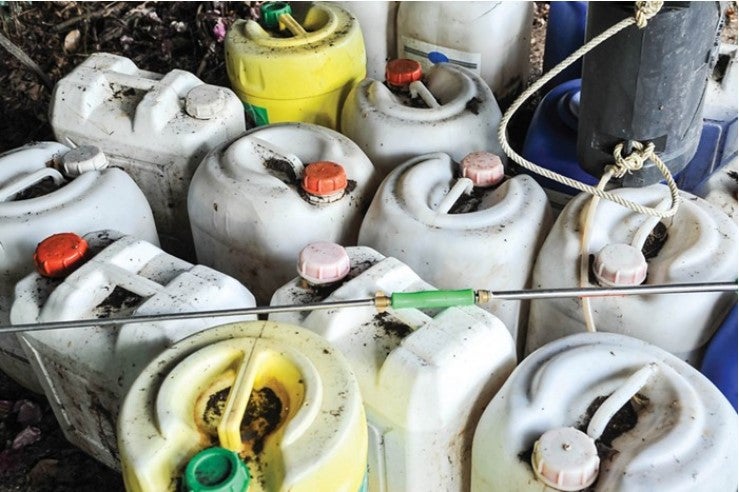Earthjustice goes to court for our planet.
We’re here because the earth needs a good lawyer.
EPA Takes First Steps to Regulate Long-Hidden Source of Toxic PFAS
This page was published a year ago. Find the latest on Earthjustice’s work.
What happened: The Environmental Protection Agency (EPA) recently took its first steps towards regulating a significant but long-hidden source of PFAS (per and poly-fluoroalkyl substances), toxic chemicals linked to a host of health harms at very low levels of exposure. PFAS are found in a variety of everyday goods, including in plastic containers holding consumer products. The agency’s actions come after a coalition of advocates, including several represented by Earthjustice, petitioned the EPA under our nation’s chemical laws to regulate PFAS leaching from fluorinated plastic containers.
Why it matters: PFAS are toxic “forever chemicals” that are linked to several harmful health impacts and are found in a majority of the U.S. population. Today, hundreds of millions of plastic containers, used in vast sectors of the economy, undergo a fluorination process that creates harmful PFAS that can leach into consumer products and make their way into our bloodstreams.
PFAS fluorination presents an unnecessary risk to consumers
- What fluorination is for: For more than 40 years, Inhance Technologies LLC, a plastic materials manufacturer, has been using a fluorination process to create a protective barrier in high-density polyethylene (HDPE) plastic containers.
- PFAS as a byproduct: During the fluorination process, plastic containers are blasted with fluorine gas, which reacts with oxygen and forms toxic PFAS as a byproduct. The process leaches PFAS into the products stored in the containers, and into the environment once the products are used or the plastic containers break down.
- Everyday items: Each year, some 200 million plastic containers are fluorinated using this process. Many of these containers hold common household items like shampoos and conditioners, household cleaners, and agricultural products like pesticides.
- Proof of PFAS: Tests conducted by Inhance, the EPA, Notre Dame, and others have found PFAS chemicals on the inner and outer surfaces of fluorinated containers and in the contents of the containers.
Regulating PFAS fluorination is an important step to protecting public health
- Toxic at any level: Many of the PFAS associated with the fluorination of plastics, such as PFOA, PFNA, and PFDA, are known for their extreme toxicity and potential to cause serious health issues, including cancer, liver damage, developmental issues, and immune system disruptions. The substances are toxic, even at extremely low levels.
- Ignoring health concerns: Despite the health risks and the existence of less harmful alternatives, Inhance has refused to halt its PFAS-creating fluorination process.
- What the government can do: The EPA has already taken critical steps in regulating PFAS by issuing the first ever drinking water standards for six toxic PFAS and designating two of the most prevalent PFAS in the environment as hazardous substances. Regulation of the fluorination process is another crucial step to mitigating the impact of PFAS on public health and the environment.
- Win for public health: The EPA recently agreed to start the process of regulating PFAS from fluorinated containers after Earthjustice and its clients successfully petitioned the agency. In late September 2024, the EPA opened a new public comment period to solicit information related to that rulemaking process.
The EPA must continue its work in regulating PFAS
- Historic lack of regulation: For decades, the federal government has underregulated PFAS, much to the dismay of impacted communities and health advocates around the world. Today, PFAS are ubiquitous throughout our environment, found everywhere from drinking water and industrial sites to firefighting foam and consumer products.
- We need robust laws at the federal and state level to protect us from all PFAS contamination.
- Earthjustice believes that lawmakers and regulators should take a broad-based, precautionary approach to regulating dangerous chemicals, including PFAS, in order to protect communities from chemical exposure through air, water, and soil.
